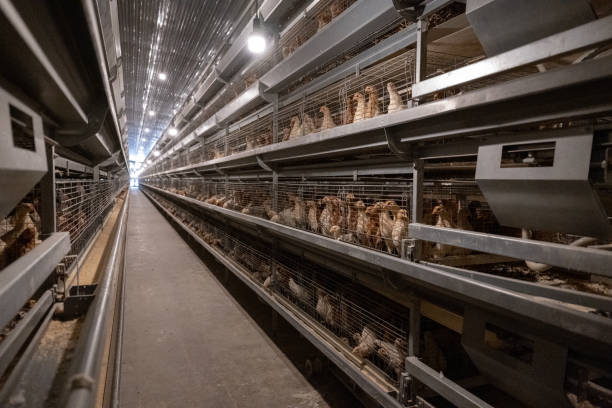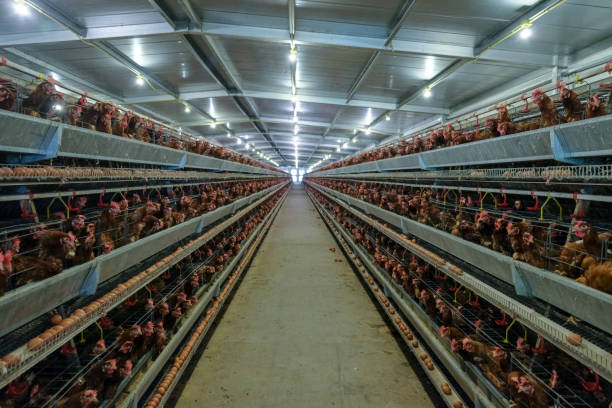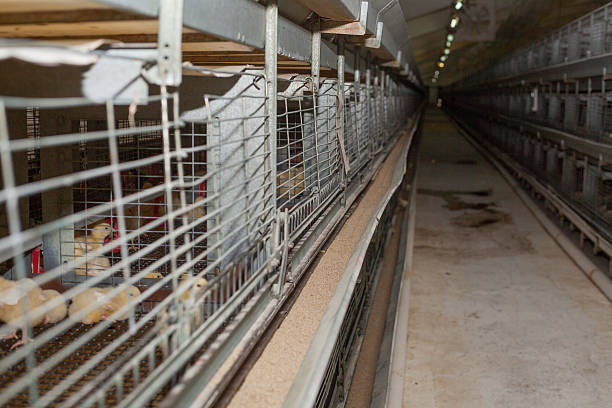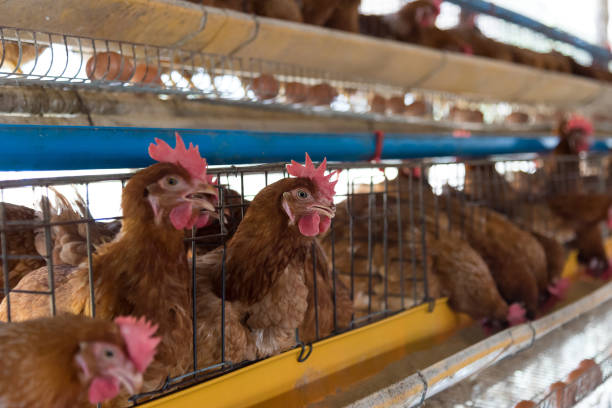Maximize Your Poultry Profits: Affordable Chicken Cage Set Options
Maximize Your Poultry Profits: Affordable Chicken Cage Set Options
For poultry farmers looking to boost efficiency and profitability, the right equipment is paramount. One of the most critical investments is a well-designed chicken cage system. However, the initial cost can be a significant barrier. This article explores how to maximize your poultry profits by selecting affordable chicken cage set options without compromising quality or performance. We’ll delve into different cage types, materials, and features to help you make an informed decision that suits your specific needs and budget.
Understanding the Importance of Chicken Cage Systems
Before diving into affordability, let’s quickly recap why chicken cage systems are essential for modern poultry farming.
Increased Space Utilization: Cages allow you to house more birds in a smaller area compared to free-range or deep litter systems. This translates into higher production density and better land utilization.
Improved Hygiene and Disease Control: Separating birds into individual or small groups reduces the spread of diseases and parasites. Cages with sloped floors facilitate manure removal, leading to a cleaner and healthier environment.
Easier Management and Monitoring: Cages make it easier to monitor individual bird health, track egg production, and provide targeted care. This leads to better overall flock management.
Reduced Egg Breakage and Waste: Eggs roll away from the hens and are collected easily, minimizing breakage and contamination.
Better Feed Conversion Ratio: Caged birds tend to have better feed conversion ratios as they expend less energy roaming around and have less competition for food.
Defining “Affordable” – It’s Not Just About the Price Tag
When we talk about affordable chicken cage sets, we’re not just looking for the cheapest option. True affordability considers the long-term costs and benefits. A seemingly cheap cage might be made of low-quality materials that degrade quickly, leading to frequent repairs or replacements. It might also lack essential features that improve bird health and productivity.
Therefore, an affordable cage:
Is built to last: Durable materials and construction ensure a long lifespan.
Promotes bird welfare: Design features prioritize bird comfort and health, leading to better egg production and weight gain.
Reduces labor costs: Efficient design simplifies tasks like feeding, watering, and egg collection.
Minimizes waste: Features like proper drainage and feed spillage prevention contribute to cost savings.
Types of Chicken Cage Systems and Affordability Considerations
The best cage type for your operation depends on various factors, including the size of your farm, the type of birds you raise (layers or broilers), and your management style. Here’s a breakdown of popular cage systems and how their affordability factors in:
Layer Cages (Egg-Laying Chickens):
A-Type Layer Cages: These are the most common and typically the most affordable type of layer cage. The A-frame design is simple to manufacture, which translates to lower upfront costs. They are available in various sizes and tiers.
Affordability Considerations: A-type cages are generally the cheapest initially, but consider the long-term costs of maintenance and potential egg breakage if the design isn’t optimal. Look for features like well-designed egg roll-out systems and durable wire mesh to maximize value.
H-Type Layer Cages (Vertical or Battery Cages): These cages are stacked vertically, maximizing space utilization. They are automated to improve efficiency.
Affordability Considerations: H-type cages have a higher initial investment cost than A-type cages due to their complex construction and automation. However, they can significantly reduce labor costs and improve egg production efficiency, making them cost-effective in the long run for larger operations. Factors influencing the price include the level of automation (e.g., automatic feeding, watering, manure removal, and egg collection), the quality of the automation components, and the cage capacity.
Flat-Deck Layer Cages: These cages provide a more spacious environment for the birds, allowing for some movement.
Affordability Considerations: Flat-deck cages fall somewhere in between A-type and H-type cages in terms of cost. They offer a good balance between space, cost, and ease of management, making them a viable option for medium-sized farms.
Broiler Cages (Meat Chickens):
Multi-Tier Broiler Cages: Similar to H-type layer cages, these cages are stacked vertically to maximize space.
Affordability Considerations: The price of multi-tier broiler cages depends on the size of the cage and the number of tiers. Automation features like automatic feeding, watering, and manure removal add to the initial cost but can significantly reduce labor requirements and improve broiler growth rates.
Single-Tier Broiler Cages: These cages typically have a larger footprint but are less complex and therefore more affordable initially.
Affordability Considerations: Single-tier cages are a budget-friendly option for smaller-scale broiler operations, but require more floor space.
Key Factors Influencing the Cost of Chicken Cage Sets
Several factors influence the price of chicken cage sets. Understanding these factors will help you make informed decisions and find the most affordable option for your needs.
Materials: The type and quality of materials used in construction have a significant impact on the price.
Wire Mesh: Galvanized steel wire is the most common material for cage floors and walls. The gauge (thickness) of the wire and the type of galvanization (e.g., hot-dip galvanization offers better corrosion resistance) affect the price and durability.
Framework: Steel frames provide structural support for the cages. The thickness and quality of the steel also influence the price and lifespan.
Plastic Components: Plastic feeders, drinkers, and manure trays are typically made from durable, food-grade plastics. The quality of the plastic affects its longevity and resistance to damage.
Size and Capacity: The size of the cage and the number of birds it can house directly influence the price. Larger cages and systems with higher capacity will generally cost more.
Automation: Automated features like automatic feeding, watering, manure removal, and egg collection increase the initial cost but can save on labor in the long run.
Customization: Customizing cages to meet specific needs, such as adding extra tiers or modifying the dimensions, can also affect the price.
Manufacturer and Brand: Different manufacturers and brands have varying pricing strategies and quality standards. Researching different suppliers and comparing prices is essential.
Transportation Costs: Shipping costs can add a significant amount to the total cost of the cage system, especially for international orders.
Installation Costs: Some cage systems require professional installation. Involve the cost of installation into your budget.

Strategies for Finding Affordable Chicken Cage Set Options
Here are some practical strategies for finding affordable chicken cage set options without compromising quality:
Define Your Needs and Budget: Before you start shopping, clearly define your needs and budget. How many birds do you plan to raise? What is your budget for the cage system? What level of automation do you require? Having clear answers to these questions will help you narrow your search and avoid overspending. Consider your long-term plans for expansion.
Research Different Suppliers: Don’t settle for the first supplier you find. Research different manufacturers and brands to compare prices, quality, and features. Reading online reviews and testimonials can provide valuable insights into the experiences of other customers.
Consider Used or Refurbished Cages: Buying used or refurbished cages can be a cost-effective option, especially for smaller operations. Just be sure to carefully inspect the cages for any damage or wear and tear before making a purchase and ensure they have been properly sanitized.
Look for Sales and Discounts: Many suppliers offer seasonal sales, discounts, and promotions. Sign up for email newsletters and follow them on social media to stay informed about the latest deals.
Negotiate with Suppliers: Don’t be afraid to negotiate the price with suppliers. They may be willing to offer a discount, especially if you’re buying in bulk or paying in cash.
Prioritize Essential Features: Focus on essential features that will improve bird health, productivity, and management efficiency. Avoid unnecessary features that add to the cost without providing significant benefits. Features such as adjustable height for water lines, feed troughs, and adequate ventilation are critical.
Compare Long-Term Costs: Remember that the cheapest cage isn’t always the most affordable in the long run. Consider the long-term costs of maintenance, repairs, and replacements when making your decision. A more expensive cage that lasts longer and requires less maintenance may be a better investment.
Consider Locally Sourced Materials: If possible, source materials locally to reduce transportation costs and support local businesses.

Buy in Bulk: If you have a large operation, buying cages in bulk can often result in significant discounts.
Do it Yourself (DIY): If you’re handy, you may be able to build your chicken cages. There are many resources online with plans and instructions.
Examples of Affordable Chicken Cage Options
A-Type Layer Cages (Entry-Level): Options made with galvanized wire and simple construction can be found at competitive prices. Look for features like adequate ventilation and easy egg collection.
Used or Refurbished H-Type Layer Cages: These may require some repairs or upgrades, but can represent significant savings compared to new models.
DIY Broiler Cages: Building your broiler cages using locally sourced materials like wood and wire mesh can be a very affordable option for small-scale operations.
The Importance of Biosecurity in Cage Systems
Regardless of the type of cage you choose, maintaining proper biosecurity is crucial for preventing disease outbreaks and ensuring the health of your flock. This includes:
Regular cleaning and disinfection of cages and equipment.
Implementing strict hygiene protocols for workers and visitors.
Controlling pests and rodents.
Vaccinating birds against common diseases.
Investing in the Future of Your Poultry Farm
Choosing affordable chicken cage set options is a smart way to maximize your poultry profits. By carefully considering your needs, researching different suppliers, and prioritizing essential features, you can find a cage system that fits your budget and helps you achieve your production goals. Remember that the right cage system is an investment in the future of your poultry farm, so choose wisely. Prioritize quality within your budget, and focus on long-term value rather than just the initial price tag.





